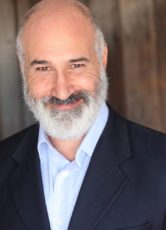
Sanford Meisner, one of the most respected and influential acting instructors of the 20th century, once described acting as “living truthfully under imaginary circumstances.” The legendary drama teacher developed a system of exercises called the Meisner Technique that he taught at New York City’s Neighborhood Playhouse, eventually branching out to North Hollywood and the West Indies.
The Meisner Technique guides performers to behave instinctively and be in touch with their emotions, rather than overthinking the acting process. Countless thespians have reached their creative potential thanks to Meisner’s groundbreaking “real people” technique, including Christoph Waltz, Robert Duvall, Michelle Pheiffer, Jeff Bridges, Jon Voight, Kathy Bates, James Gandolfini, Jack Nicholson, Tina Fey, Sigourney Weaver, Sam Rockwell, and Diane Keaton.
Three of Meisner’s main teachings are emotional preparation, repetition, and “the pinch and the ouch.” Working together, these components train actors to keenly observe the subtleties in the cues of their scene partners and remain fully present during the scene, as opposed to relying on memory or how the scene was rehearsed.
Emotional preparation
Jessica Houde-Morris is a teacher of the Meisner Technique at the Houde School of Acting, and she explains how emotional preparation helps actors create a fantasy life in order to be more present and fully engaged while performing. When preparing for a highly charged scene, Meisner was concerned about actors relying too heavily on emotional recall. He didn’t like the idea that a performer would need to relive intense, perhaps traumatic events from their childhoods or teen years to be able to be “emotionally alive” in a scene. Instead, he believed in the power of private, fully lived daydreams for emotional preparation. “Every day we daydream, especially artists. So why not use that for your emotional preparation?” Houde-Morris explains.
This technique is best used to prepare for a scene’s very first moments, say, when an actor needs to start a scene in a highly emotional state. From that point on, all action and reaction is to emerge organically based on what other actors in the scene are saying and doing. In this way, actors bring something to the table and then are able to build off of one another’s performances in the moment.
An example of using imagination for emotional preparation
Referring to the Meisner Technique, renowned acting coach Suzanne Shepherd offers an example of emotional preparation, saying: “It’s not based on remembering the day that your dog got killed by a car. That’s over. When you build something fresh and new, it has life in it, and it’s doable because your imagination takes hold of you and has an effect upon you.”
Shepherd asks her students, “What is your life like when you enter this scene?” Rather than have them answer with a mood such as “happy” or “angry,” she expects to hear a descriptive phrase like, “I’m just sitting on top of the world.” To dig into this state of mind, Shepherd asks what could make them actually feel this way. She offers one possible reason: Imagine reading a newspaper headline saying you won an Oscar.
From there, she encourages her students to go step-by-step imagining the scenario of first receiving the phone call about the nomination (and reliving the details of the way the conversation went); next, making a phone call to a loved one to share the good news (Who would you tell first? And how exactly does that conversation go?). From there, perhaps you’ll figure out what you’re going to wear. “Go on a little trip,” she says. “Take yourself on a little trip. Go step—tiny, tiny—detail by detail by detail, and enjoy it. Detail by detail … and all of a sudden, you’re leading it, and all of a sudden it begins to lead you.” Soon enough, you’re actually feeling on top of the world, just as you set out to feel.
Verbal repetition
Meisner developed verbal repetition exercises to more efficiently build connections between actors, and to improve his students’ observational skills and instincts. Two actors stand facing one another and repeat a phrase or objective observations until their interactions organically transition to something else. For instance, A: “I’m looking at you.” B: “I’m looking at you.” A. “I’m looking at you.” B. “You’re looking at me.” A. “Yeah, I’m looking at you.” B: “Yeah, you’re looking at me.” A: “You sound uncomfortable.” B: “I sound uncomfortable?” A: You sound uncomfortable.” While some performers find these exercises to be monotonous, others insist they are instrumental in learning to pay close attention to the small cues of their scene partner, enabling them to deliver authentic responses. Repetition allows actors to remain in the moment, get out of their own heads, and constantly adjust to whatever a scene partner throws at them.
The pinch and the ouch
Meisner used the expression “the pinch and the ouch” to emphasize the principle of responding to a scene partner’s cues in proportion to the intensity with which they were given. For example, if someone gives you a pinch, it would trigger a natural “ouch” response.” Not reacting to the pinch at all or shrieking as if you just witnessed a murder would be disproportionate reactions. That is to say, the degree of “pinch” should proportionally affect the degree of reaction.
However, in the world of drama, the “pinch” might be an insult or the receiving of tragic news or an assault. Being tuned in to the pinch-and-the-ouch notion enables actors to remain present during a performance, reacting to a scene partner’s cues genuinely and believably rather than approaching the scene as though they already know exactly the intensity of what’s to come.
Meisner’s principles and exercises ultimately prepare his students to improvise and remain flexible while performing. “It is my belief that talent comes from instinct,” he said. Meisner valued authentic spontaneity in performances which calls for actors’ vulnerability and courage as they navigate the scene. He also discouraged overly thought-out, excessively planned approaches to the craft.




